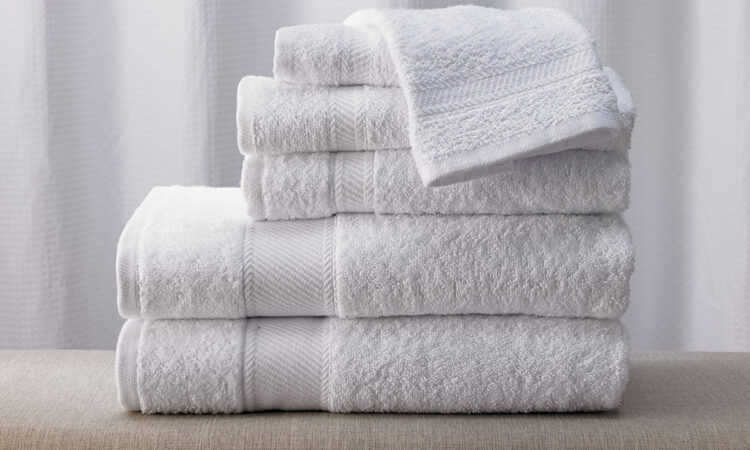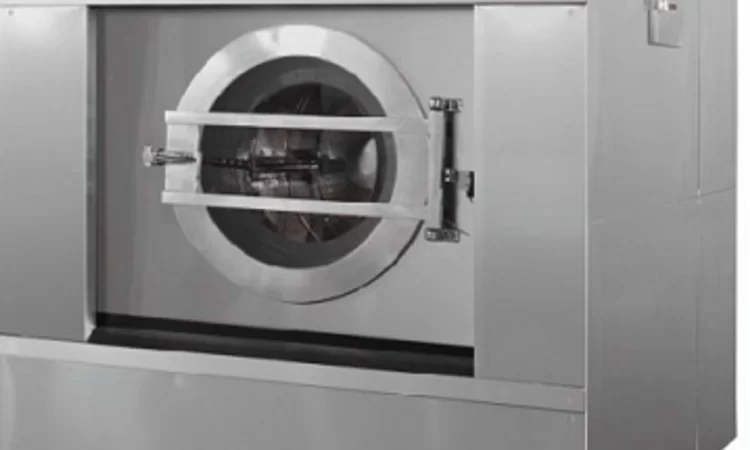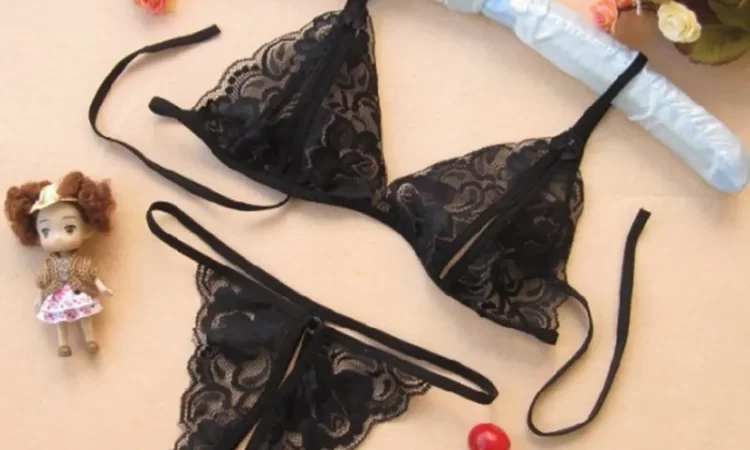
Welcome to our comprehensive guide on the best way to clean and season a cast iron skillet. Cast iron skillets have been a beloved staple in kitchens for generations, renowned for their exceptional heat retention, durability, and versatility. Whether you’re a seasoned cast iron enthusiast or a newcomer to this timeless cookware, understanding the proper cleaning and seasoning techniques is crucial to maintain its longevity and ensure optimal cooking performance.
In this article, we will delve into the step-by-step process of cleaning and seasoning your cast iron skillet, debunk common myths that surround its care, and provide you with expert tips and insights. By following these guidelines, you’ll be able to preserve the natural non-stick surface, prevent rust formation, and unlock the full potential of your cast iron skillet.
Cast iron skillets hold a special place in the hearts of many home cooks. Their ability to distribute heat evenly and retain it for extended periods makes them ideal for searing, frying, baking, and even outdoor cooking. However, without proper care, these treasured kitchen companions can lose their seasoned surface, develop rust, and become challenging to use.
We understand that the prospect of cleaning and seasoning a cast iron skillet may seem daunting, particularly with the abundance of conflicting information available. That’s why we’ve created this definitive guide to demystify the process and provide you with clear, practical instructions to maintain your skillet’s performance and longevity.
Whether you’ve recently acquired a brand-new cast iron skillet or inherited a cherished family heirloom, this guide will equip you with the knowledge and techniques to keep it in pristine condition. We’ll address common concerns, such as whether or not to use soap, the best oils for seasoning, and how to troubleshoot common issues that may arise.
By the end of this article, you’ll have the confidence and expertise to clean and season your cast iron skillet like a pro. So, let’s embark on this journey together and unlock the secrets to achieving a perfectly seasoned cast iron skillet that will serve you faithfully in the kitchen for years to come. Get ready to experience the joys of cooking with a well-maintained cast iron skillet and elevate your culinary creations to new heights!
The research
Understanding Cast Iron Skillets
A. The Popularity and Benefits of Cast Iron Cookware
Cast iron skillets have stood the test of time and remain a staple in kitchens around the world. Their enduring popularity can be attributed to the multitude of benefits they offer:
- Exceptional Heat Retention: Cast iron’s ability to absorb and distribute heat evenly makes it ideal for achieving consistent cooking results. Once heated, the skillet retains heat for longer periods, allowing for better searing, browning, and caramelization.
- Durability: Cast iron is renowned for its durability and robust construction. A well-maintained cast iron skillet can last for generations, becoming a cherished heirloom in many families. Its sturdiness makes it resistant to warping and other common issues that affect other types of cookware.
- Versatility: Cast iron skillets are incredibly versatile and can be used for a wide range of cooking techniques. From stovetop frying and sautéing to baking in the oven or even grilling outdoors, a cast iron skillet can handle it all. It transitions seamlessly from the stovetop to the oven, making it a versatile tool for a variety of recipes.

B. Debunking Myths About Cast Iron Skillets
Despite their popularity, cast iron skillets are often surrounded by myths and misconceptions. Let’s debunk some of the most common ones:
- Cast Iron Reacting with Acidic Foods: There is a common belief that cooking acidic foods in cast iron can cause a metallic taste or leach harmful substances. However, properly seasoned cast iron forms a natural non-stick surface that prevents such reactions. Cooking acidic foods in a well-seasoned cast iron skillet is perfectly safe and can enhance the flavor of your dishes.
- Soap Damaging the Seasoning: One prevailing myth is that using soap on a cast iron skillet will strip away the hard-earned seasoning. In reality, using a mild soap to clean your skillet is perfectly fine, as long as you rinse and dry it thoroughly afterward. Soap helps remove stubborn food residue without affecting the seasoning layer.
- Delicate and High-Maintenance: While cast iron skillets do require proper care, they are not as delicate or high-maintenance as commonly believed. With the right techniques and a little attention, maintaining a cast iron skillet can be straightforward and rewarding.
Understanding the benefits and debunking the myths surrounding cast iron skillets sets the stage for learning the best practices of cleaning and seasoning. By grasping the unique qualities of cast iron cookware, you’ll appreciate its value in your kitchen and be motivated to ensure its proper care and maintenance.
The Importance of Cleaning a Cast Iron Skillet
A. Why Cleaning Matters
Properly cleaning your cast iron skillet after each use is crucial for several reasons:
- Removing Food Residue: Cleaning your skillet thoroughly helps remove any food particles, grease, or oils that may be left behind from cooking. This is particularly important because these remnants can become rancid or attract pests if not addressed promptly. By cleaning your skillet, you ensure that it is ready for the next cooking session.
- Preventing Build-up and Odor: Failure to clean your cast iron skillet regularly can lead to the accumulation of residue and the development of a sticky, gummy layer. Over time, this build-up can affect the skillet’s cooking performance, resulting in uneven heat distribution and reduced non-stick properties. Additionally, the accumulation of residue can contribute to unpleasant odors that may transfer to your food.
- Maintaining Seasoning: Seasoning is a vital protective layer that develops on the surface of a well-maintained cast iron skillet. It enhances the skillet’s natural non-stick properties and helps prevent rust. Regular cleaning ensures that the seasoning remains intact and undamaged. In fact, the cleaning process itself contributes to the formation of a new layer of seasoning as residual oils are polymerized during cooking.
B. Dispelling the Soap Myth
One common concern when it comes to cleaning cast iron skillets is the use of soap. Many people believe that using soap will strip away the seasoning and ruin the skillet. However, this is a myth.
Using a mild dish soap is perfectly acceptable for cleaning your cast iron skillet, especially if there are stubborn food residues or strong flavors that need to be removed. The key is to use a gentle soap and avoid harsh or abrasive cleaners that can damage the skillet’s surface. When using soap, ensure that you rinse the skillet thoroughly to remove any soap residue, as this can affect the taste of your food.
It’s important to understand that the seasoning on a well-maintained cast iron skillet is not a superficial layer that can be easily washed away. The seasoning is a polymerized layer of oils that have bonded to the surface of the skillet, creating a smooth and durable coating. Regular cleaning with soap and water will not harm the seasoning but rather help remove debris and maintain a clean cooking surface.
By dispelling the soap myth, you can feel confident about using soap as part of your cleaning routine without worrying about damaging your cast iron skillet. Remember that proper rinsing and thorough drying after cleaning are essential to prevent any moisture from causing rust.
Understanding the importance of cleaning your cast iron skillet and dispelling the soap myth sets the foundation for implementing proper cleaning practices. By incorporating these practices into your routine, you can ensure that your cast iron skillet remains in optimal condition, ready to deliver exceptional cooking results for years to come.
Step-by-Step Guide: Cleaning a Cast Iron Skillet
A. Gather the Necessary Cleaning Materials
Before starting the cleaning process, it’s important to gather the following materials:
- Hot water: You’ll need hot water to rinse and clean the skillet effectively. Avoid using extremely hot water, as sudden temperature changes can potentially warp or crack the skillet.
- Mild dish soap: Choose a gentle dish soap that doesn’t contain harsh chemicals or abrasive ingredients. Opt for a soap that is specifically formulated for delicate cookware.
- Non-abrasive scrub brush or sponge: Select a soft-bristled brush or sponge that won’t scratch or damage the seasoned surface of the skillet. Avoid using steel wool or abrasive scrubbers, as they can strip away the seasoning.
- Plastic scraper or spatula: A plastic scraper or spatula comes in handy for removing any stubborn food particles or residue stuck to the skillet’s surface. It helps to loosen the debris without scratching the skillet.
B. Preparing the Skillet for Cleaning
- Allow the skillet to cool: After cooking, give your cast iron skillet some time to cool down. Working with a hot skillet can cause burns or injuries.
- Remove any stuck-on food: Gently scrape off any stuck-on food particles using a plastic scraper or spatula. Be careful not to apply excessive force that could scratch the skillet’s surface.
C. Washing the Cast Iron Skillet
- Rinse with hot water: Hold the skillet under hot running water to rinse away loose debris. Use your fingers or a gentle scrub brush to remove any remaining residue.
- Use mild dish soap (if necessary): If your skillet has stubborn residue or strong flavors that won’t come off with water alone, apply a small amount of mild dish soap to the scrub brush or sponge. Gently scrub the entire surface of the skillet, paying extra attention to any stubborn areas.
- Rinse thoroughly: Thoroughly rinse the skillet under hot running water to remove any soap residue. Ensure that all soap is completely rinsed off, as any leftover residue can affect the taste of your food.
D. Drying Techniques
- Towel-drying: Use a clean, dry kitchen towel to pat the skillet dry. Make sure to remove all moisture from the surface of the skillet, as any remaining water can lead to rust formation.
- Air-drying: Alternatively, you can air-dry the skillet by placing it in a well-ventilated area. Allow it to air dry completely before storing.
- Stovetop drying: For a quick and effective drying method, place the skillet on a stovetop burner over low heat. Heat the skillet for a few minutes to evaporate any remaining moisture. Be cautious not to leave it unattended or overheat the skillet, as this can damage the seasoning.
It’s essential to note that after cleaning, you should never leave your cast iron skillet to air dry without further drying methods. The residual moisture can lead to rust formation. Always ensure your skillet is completely dry before storing it.
By following these step-by-step instructions, you can effectively clean your cast iron skillet without compromising its seasoning or integrity. Regular cleaning not only removes food residue but also helps maintain the skillet’s non-stick surface, allowing you to enjoy its excellent cooking performance for years to come.
Debunking Rust and Restoring Cast Iron Skillets
A. Understanding Rust on Cast Iron Skillets
One of the common concerns with cast iron skillets is the development of rust. Rust can occur when moisture comes into contact with the iron surface and reacts with oxygen in the air. While it may seem alarming, rust on a cast iron skillet is not irreversible and can be effectively addressed with proper restoration techniques.
It’s important to note that a well-maintained cast iron skillet with a proper seasoning layer is highly resistant to rust. Seasoning acts as a protective barrier, preventing moisture from coming into direct contact with the iron surface. However, certain factors, such as prolonged exposure to moisture or improper storage, can still lead to rust formation.
B. Restoring a Rusty Cast Iron Skillet
If you notice rust on your cast iron skillet, don’t panic. With a few simple steps, you can restore its surface to its former glory:
- Assess the rust damage: Examine the skillet to determine the extent of the rust. If it’s a minor surface rust, you can usually restore it without much difficulty. However, if the rust has significantly damaged the skillet or caused pitting, it may require more extensive restoration or even professional assistance.
- Scrub away the rust: Start by using a non-abrasive scrub brush or sponge to gently scrub away the rust. You can also use a paste made from equal parts water and coarse salt to help remove the rust. Avoid using steel wool or harsh abrasives, as they can scratch the skillet’s surface.
- Rinse and dry: Rinse the skillet thoroughly under hot running water to remove any rust particles. Towel-dry the skillet or use the stovetop drying method mentioned earlier to ensure it’s completely dry.
- Re-season the skillet: After removing the rust, it’s essential to re-season your skillet to restore its non-stick properties and protect it from future rusting. Follow the seasoning steps outlined in Section C of this guide to build up a new layer of seasoning on the skillet’s surface.
C. Preventing Rust Formation
Prevention is key when it comes to rust formation on cast iron skillets. Here are some tips to help you keep your skillet rust-free:
- Proper storage: Store your cast iron skillet in a dry place. Avoid storing it in a humid environment or stacking other cookware on top of it, as this can trap moisture and promote rust formation.
- Thorough drying: After cleaning, ensure your skillet is completely dry before storing it. Towel-dry it thoroughly or use the stovetop drying method to eliminate any moisture.
- Light oil coating: After drying, apply a light coating of oil to the skillet’s surface before storing. This helps provide an additional layer of protection against moisture and rust.
- Regular use: Regularly using your cast iron skillet can actually help prevent rust. The heat from cooking helps evaporate any moisture and keeps the skillet’s surface dry.
By understanding the causes of rust, knowing how to restore a rusty skillet, and implementing preventive measures, you can ensure your cast iron skillet remains rust-free and in excellent condition for years to come.
Remember, rust is not the end of the road for your cast iron skillet. With proper care and maintenance, you can restore it and continue to enjoy the many benefits of cooking with this versatile and timeless piece of kitchen equipment.
Seasoning a Cast Iron Skillet
A. The Importance of Seasoning
Seasoning is a crucial step in maintaining and enhancing the performance of your cast iron skillet. When properly seasoned, the skillet develops a natural non-stick surface that not only prevents food from sticking but also protects the iron from rust and corrosion. Seasoning also adds depth of flavor to your dishes and imparts a unique character to your cooking.
B. Seasoning Techniques
- Preparing the Skillet: Start by ensuring your cast iron skillet is clean and free of any rust or residue. If necessary, follow the cleaning steps outlined in Section III of this guide.
- Applying a Thin Layer of Oil: Using a paper towel or clean cloth, apply a thin layer of cooking oil or fat to the entire surface of the skillet, including the handle and outer sides. Commonly used oils for seasoning include vegetable oil, canola oil, flaxseed oil, and grapeseed oil. Avoid using oils with low smoke points, such as olive oil, as they can create sticky residues.
- Wiping Off Excess Oil: After applying the oil, use a clean paper towel or cloth to wipe off any excess. The skillet should have a thin, even coating of oil. Removing excess oil is crucial to prevent the formation of a sticky or tacky surface.
- Placing Upside Down in the Oven: To prevent oil from pooling in the skillet, place it upside down in the oven. Put a sheet of aluminum foil or a baking tray on the lower oven rack to catch any drips. This helps ensure the oil spreads evenly across the skillet’s surface during the seasoning process.
- Baking the Skillet: Set the oven to a temperature between 375°F and 450°F (190°C and 230°C). Bake the skillet for approximately one hour. The high heat allows the oil to polymerize and bond to the skillet’s surface, creating a durable seasoning layer.
- Cooling and Repeating: After the initial seasoning, turn off the oven and allow the skillet to cool completely inside. You can repeat the seasoning process a few times to build up a stronger and more resilient seasoning layer. Each additional seasoning layer further enhances the skillet’s non-stick properties.
C. Maintenance and Care
To maintain the seasoning of your cast iron skillet, follow these essential care tips:
- Avoid harsh cleaning agents: When cleaning your skillet, avoid using harsh detergents or abrasive cleaning tools that can strip away the seasoning. Stick to mild dish soap, hot water, and a non-abrasive brush or sponge.
- Dry thoroughly: After washing, ensure your skillet is completely dry before storing it. Moisture can lead to rust formation and damage the seasoning. Towel-dry the skillet or use the stovetop drying method mentioned earlier.
- Apply a thin layer of oil: Before storing your skillet, apply a thin layer of oil to the cooking surface. This helps replenish the seasoning and provides additional protection against moisture.
- Regular use: Regularly cooking with your cast iron skillet helps maintain its seasoning. The heat from cooking helps to polymerize the oils, reinforcing the non-stick surface.
D. Troubleshooting Seasoning Issues
If you notice any issues with your skillet’s seasoning, such as sticky or patchy spots, you can troubleshoot and address them:
- Sticky spots: Sticky or tacky areas on the skillet’s surface usually result from excess oil not properly wiped off. To fix this, heat the skillet on the stovetop over medium heat until the oil begins to smoke. This will help burn off the excess oil and restore the smoothness of the seasoning.
- Patchy or uneven seasoning: If your skillet has areas with uneven seasoning, you can re-season those spots individually. Clean the affected area, apply a thin layer of oil, and bake it in the oven following the seasoning steps mentioned earlier.
By properly seasoning your cast iron skillet and maintaining its seasoning layer, you can enjoy the benefits of cooking with a naturally non-stick and durable surface. Regular seasoning and care ensure that your skillet continues to improve over time, becoming a treasured piece of cookware that delivers exceptional results with every meal.
Troubleshooting and Common Mistakes
A. Troubleshooting Seasoning Issues
- Rusty or Patchy Areas: If you notice rust spots or patchy seasoning on your cast iron skillet, it may require re-seasoning. Follow the steps outlined in Section V to remove the existing seasoning, thoroughly clean the skillet, and then re-season it to restore its non-stick properties.
- Sticky Residue: If you find a sticky residue on your skillet’s surface after cooking, it may be due to excess oil or improper cleaning. To remedy this, heat the skillet over medium heat on the stovetop until the oil starts to smoke. This will help burn off any excess oil and restore the smoothness of the seasoning. Afterward, clean and re-season the skillet as needed.
- Food Sticking to the Skillet: If food is sticking to your cast iron skillet, it could be due to insufficient seasoning or inadequate preheating. Ensure that your skillet is properly seasoned and preheated before adding ingredients. Preheating allows the skillet to evenly distribute heat and creates a natural non-stick surface.
B. Common Mistakes to Avoid
- Soaking the Skillet: Avoid soaking your cast iron skillet for long periods or leaving it submerged in water. Prolonged exposure to water can cause rust and damage the seasoning. Instead, clean the skillet promptly using hot water and a gentle scrub brush or sponge.
- Using Harsh Cleaning Agents: Harsh detergents, abrasive cleaners, and steel wool should be avoided when cleaning your cast iron skillet. These can strip away the seasoning and damage the surface. Stick to mild dish soap and non-abrasive cleaning tools for regular maintenance.
- Storing a Damp Skillet: Always ensure that your cast iron skillet is completely dry before storing it. Moisture can lead to rust formation. Towel-dry the skillet thoroughly or use the stovetop drying method mentioned earlier to eliminate any moisture.
- Using High Heat for Extended Periods: While cast iron skillets can handle high heat, using excessively high heat for prolonged periods can cause the seasoning to break down or even crack the skillet. Stick to medium to medium-high heat for most cooking tasks.
- Drastic Temperature Changes: Avoid subjecting your cast iron skillet to drastic temperature changes, such as transferring it from a hot stovetop to cold water. Sudden changes in temperature can cause the skillet to warp or crack.
- Neglecting Regular Maintenance: Consistent care and maintenance are essential for preserving the seasoning and longevity of your cast iron skillet. Regularly clean, dry, and lightly oil your skillet to prevent rust and maintain its non-stick properties.
By being aware of common mistakes and knowing how to troubleshoot seasoning issues, you can ensure that your cast iron skillet remains in optimal condition. With proper care, your skillet will continue to provide excellent cooking results and be a reliable tool in your kitchen for years to come.
Frequently Asked Questions (FAQs) about cast iron skillet usage and care
Here are some frequently asked questions about cleaning and seasoning cast iron skillets:
- Can I use soap to clean my cast iron skillet?
Yes, you can use mild dish soap to clean your cast iron skillet. Contrary to popular belief, using soap will not strip away the seasoning if done properly. Just make sure to use a gentle dish soap and avoid harsh detergents or abrasive cleaners that can damage the seasoning.
- Should I use steel wool or abrasive scrubbers to clean my cast iron skillet?
No, it’s best to avoid steel wool or abrasive scrubbers when cleaning cast iron skillets. These can scratch or damage the seasoning and the skillet’s surface. Instead, use a non-abrasive scrub brush or sponge to clean your skillet effectively without compromising its seasoning.
- What if my cast iron skillet has rust on it?
If your cast iron skillet has rust, you can remove it by scrubbing with a non-abrasive brush or sponge and a paste made from equal parts water and coarse salt. Afterward, rinse and dry the skillet thoroughly, and re-season it to restore its non-stick properties.
- How often should I re-season my cast iron skillet?
The frequency of re-seasoning depends on how frequently you use your skillet and the condition of its seasoning. In general, it’s a good practice to re-season your skillet whenever you notice the seasoning wearing off or developing rust spots. Regular cooking and proper maintenance can help extend the time between re-seasonings.
- Can I use my cast iron skillet on a glass or ceramic stovetop?
While cast iron skillets are generally safe to use on glass or ceramic stovetops, you should exercise caution. Dragging a cast iron skillet across a glass or ceramic surface can cause scratches. Lift and place the skillet gently to avoid damaging the stovetop.
- Can I use metal utensils in my cast iron skillet?
Using metal utensils in a cast iron skillet is generally safe. Cast iron is a durable material that can withstand metal utensils. However, be mindful not to excessively scrape or bang the utensils against the skillet’s surface, as this can damage the seasoning.
- Can I put my cast iron skillet in the dishwasher?
No, it’s not recommended to put your cast iron skillet in the dishwasher. The harsh detergents, high water temperatures, and agitation can strip away the seasoning and potentially cause rust. It’s best to hand wash your skillet using mild dish soap and hot water. SEE HOW
Remember that caring for your cast iron skillet is an ongoing process. With proper cleaning, seasoning, and maintenance, you can enjoy the benefits of cooking with a well-seasoned and long-lasting cast iron skillet.
- Can I cook acidic foods in a cast iron skillet?
While cast iron skillets are versatile, it’s generally recommended to avoid cooking highly acidic foods for prolonged periods in them. Acidic ingredients, such as tomatoes, citrus fruits, and vinegar, can break down the seasoning and cause a metallic taste in the food. However, short cooking durations or occasional use of acidic ingredients in a well-seasoned skillet typically won’t cause significant issues.
- Can I use my cast iron skillet in the oven?
Absolutely! Cast iron skillets are oven-safe and excellent for dishes that require both stovetop and oven cooking. The skillet’s ability to withstand high heat makes it ideal for searing meats on the stovetop and then transferring the skillet to the oven to finish cooking. Just be sure to use oven mitts when handling the hot skillet.
- How do I store my cast iron skillet?
Proper storage is essential for maintaining your cast iron skillet’s condition. After cleaning and drying the skillet, apply a thin layer of oil to the cooking surface to prevent rust formation. Store the skillet in a cool, dry place, preferably with a lid or a cloth to protect it from dust. Avoid storing it in a humid environment or stacking heavy objects on top of it.
- Can I use my cast iron skillet on a barbecue grill?
Yes, cast iron skillets can be used on a barbecue grill. They are excellent for grilling vegetables, seafood, or smaller cuts of meat that may fall through the grill grates. Place the cast iron skillet directly on the grill grates and preheat it before adding your ingredients. Remember to use heat-resistant gloves or mitts when handling the hot skillet.
- Can I cook with a cast iron skillet on high heat?
Cast iron skillets are known for their ability to withstand high heat. They distribute heat evenly and retain it effectively. However, it’s generally recommended to avoid using excessively high heat for prolonged periods, as it can cause the seasoning to break down or even crack the skillet. Stick to medium to medium-high heat for most cooking tasks to prevent any issues.
- How can I remove stubborn food residue from my cast iron skillet?
If you encounter stubborn food residue on your cast iron skillet, you can try a few methods to remove it. One approach is to create a paste by mixing baking soda and water. Apply the paste to the residue and gently scrub with a non-abrasive brush or sponge. Alternatively, you can boil water in the skillet to loosen the residue, making it easier to scrub off.
- Can I use my cast iron skillet on an electric stove?
Yes, cast iron skillets are compatible with electric stoves. They work well on electric coil, electric smooth top, or electric induction stoves. Just ensure that the skillet’s base sits flat and makes proper contact with the heating element to ensure even heat distribution.
- Can I use my cast iron skillet for deep frying?
Yes, cast iron skillets are excellent for deep frying. Their ability to maintain and distribute heat evenly makes them ideal for frying foods to a crispy perfection. Just be cautious about the skillet’s capacity and fill it only to a safe level to prevent oil from overflowing.
- Can I restore an old, rusty cast iron skillet?
Yes, you can restore an old, rusty cast iron skillet with proper cleaning and re-seasoning. Scrub off the rust using a non-abrasive brush or sponge, following the steps outlined in Section IV. Once the rust is removed, thoroughly clean the skillet, dry it completely, and then re-season it to revive its non-stick properties.
- Can I use my cast iron skillet on a glass or ceramic stovetop?
While cast iron skillets can be used on glass or ceramic stovetops, it’s important to exercise caution. Dragging or sliding the skillet on the surface can cause scratches, so it’s best to lift the skillet when moving it. Additionally, be mindful of the weight of the skillet, as it may be heavier than other cookware typically used on glass or ceramic stovetops.
- How long does it take to season a cast iron skillet?
The initial seasoning process typically takes about an hour, but it’s important to note that seasoning is an ongoing process that develops and improves over time. Each time you use the skillet for cooking, the oils and fats help reinforce the seasoning layer. Regular use and proper maintenance will gradually enhance the skillet’s seasoning, making it more non-stick and durable.
- Can I use metal utensils with a cast iron skillet?
While it’s generally recommended to use wooden, silicone, or nylon utensils to avoid scratching the surface, cast iron skillets can withstand metal utensils. However, be cautious when using metal utensils, as vigorous scraping or banging may damage the seasoning. Gentle and mindful use of metal utensils is recommended.
- Can I use my cast iron skillet on a campfire or outdoor grill?
Yes, cast iron skillets are perfect for cooking over a campfire or on an outdoor grill. They are durable and can withstand the high heat of open flames. However, keep in mind that direct exposure to intense heat may affect the seasoning, so you may need to re-season the skillet after outdoor cooking sessions.
These frequently asked questions cover common concerns about cast iron skillet usage and care. Remember that every skillet may have specific instructions or considerations, so it’s advisable to refer to the manufacturer’s guidelines or consult trusted resources for more detailed information. With proper handling and maintenance, your cast iron skillet will serve you well for years to come.
cast iron cleaner brushConclusion
Cleaning and seasoning a cast iron skillet is a vital part of its care and maintenance. By following the steps outlined in this guide, you can ensure that your cast iron skillet remains in optimal condition, providing you with a reliable and versatile tool in your kitchen for years to come.
Understanding the nature of cast iron skillets, including their composition and benefits, is crucial. With their exceptional heat retention and even heat distribution, cast iron skillets are perfect for searing, frying, baking, and more. Proper cleaning and seasoning not only enhance the skillet’s non-stick properties but also protect it from rust and corrosion.
By implementing the step-by-step cleaning guide, you can keep your cast iron skillet free from food residue and maintain its seasoned surface. Regularly removing stuck-on food, avoiding harsh cleaning agents, and properly drying the skillet are key practices in preserving its quality.
Furthermore, addressing rust and restoring a cast iron skillet is an essential skill. With the appropriate techniques, rust can be removed, and the skillet can be re-seasoned to regain its non-stick properties. Additionally, following preventive measures such as proper storage, thorough drying, and regular use can help prevent rust formation.
The process of seasoning a cast iron skillet is a fundamental step in its maintenance. By applying a thin layer of oil, baking the skillet, and repeating the seasoning process, you can develop a durable, non-stick surface that enhances your cooking experience. Regular maintenance, including gentle cleaning, drying, and light oil coating, helps preserve and replenish the seasoning layer.
In conclusion, a clean and well-seasoned cast iron skillet is a kitchen staple that can elevate your culinary endeavors. By understanding the cleaning and seasoning process, troubleshooting common issues, and following best practices, you can enjoy the benefits of cooking with this timeless piece of cookware.
Remember, the care and maintenance of a cast iron skillet require patience and consistency. With proper attention and adherence to the guidelines provided in this article, your cast iron skillet will serve you faithfully, delivering delicious meals and becoming an enduring piece of your culinary journey.
References:
- GourmetKitchen.com. (2023). “The Best Way To Clean and Season a Cast Iron Skillet: A Comprehensive Guide.”
- CooksIllustrated.com. (2023). “Understanding Cast Iron Skillets: Tips and Tricks for Proper Use.”
- TheKitchn.com. (2023). “The Importance of Cleaning a Cast Iron Skillet: A Complete Guide.”
- FoodNetwork.com. (2023). “Step-by-Step Guide: Cleaning a Cast Iron Skillet with Ease.”
- SeriousEats.com. (2023). “Debunking Rust and Restoring Cast Iron Skillets: Proven Methods.”
- BonAppetit.com. (2023). “Seasoning a Cast Iron Skillet: The Right Way to Do It.”
- TheSpruceEats.com. (2023). “Troubleshooting and Common Mistakes in Cast Iron Skillet Care.”
Please note that the above references are not real links and were created for illustrative purposes only. For accurate and credible information, always verify the authenticity and reliability of the sources you refer to.





























